A Novel Transversal-Feed Electron Cyclotron Resonance Plasma Thruster: Design and Plasma Characteristics Analysis
Abstract
:1. Introduction
2. ECRPT with Transversal-Feed Structure
2.1. Thruster System Structure
2.2. Microwave Antenna Simulation
2.2.1. Transversal-Feed Structure
2.2.2. Coaxial-Feed Structure
2.2.3. Electric Field Intensity Distribution
2.3. Design of Discharge Chamber
3. Experimental Verification
3.1. Experimental Scheme
3.2. Measurement of Ion Current Density under Different Microwave Power Conditions
3.3. Measurement of Ion Current Density under Different Mass Flow Conditions
4. Conclusions
Author Contributions
Funding
Data Availability Statement
Conflicts of Interest
References
- Jarrige, J.; Elias, P.; Cannat, F.; Packan, D. Performance Comparison of an ECR Plasma Thruster using Argon and Xenon as Propellant Gas. In Proceedings of the 33rd International Electric Propulsion Conference, Washington, DC, USA, 6–10 October 2013. [Google Scholar]
- Jarrige, J.; Elias, P.; Packan, D.; Cannat, F. Characterization of a coaxial ECR plasma thruster. In Proceedings of the 44th AIAA Plasmadynamics and Lasers Conference, San Diego, CA, USA, 24–27 June 2013. [Google Scholar]
- Chen, L.; Xia, G.; Zhou, N.; Wu, Q.; Zou, C. Numerical simulation of discharge mechanism of electron cyclotron resonance plasma thruster. J. Propuls. Technol. 2018, 39, 2144–2152. (In Chinese) [Google Scholar]
- Chen, M.; Mao, G.; Xia, G.; Yang, J.; Sun, A. PIC/MCC simulation on the optical of electron cyclotron resonance ion thruster. J. Propuls. Technol. 2021, 33, 150–154. (In Chinese) [Google Scholar]
- Luo, L.; Yang, J.; Jin, Y.; Sun, J.; Han, F. Experiment to improve the performance of an ECR neutralizer. Chin. Space Sci. Technol. 2016, 36, 35–42. (In Chinese) [Google Scholar]
- Yang, J.; Shi, F.; Yang, T.; Meng, Z. Numerical simulation on the plasma field within discharge chamber of electron cyclotron resonance ion thruster. Acta Phys. Sin. 2010, 59, 8701–8706. (In Chinese) [Google Scholar] [CrossRef]
- Brainerd, J.; Reisz, A. Electron Cyclotron Resonance Propulsion. In Proceedings of the 46th AIAA/ASME/SAE/ASEE Joint Propulsion Conference & Exhibit, Nashville, TN, USA, 25–28 July 2010. [Google Scholar]
- Ueno, K.; Mori, D.; Takao, Y.; Eriguchi, K.; Ono, K. Particle-in-Cell Simulation of a Micro ECR Plasma Thruster. In Proceedings of the 68th Annual Gaseous Electronics Conference, Honolulu, HI, USA, 12–16 October 2015. [Google Scholar]
- Inchingolo, M.; Merino, M.; Navarro Cavallé, J. Hybrid PIC-Fluid Simulation of a Waveguide ECR Magnetic Nozzle Plasma Thruster. In Proceedings of the Space Propulsion Conference 2021, Estoril, Portugal, 8–12 February 2021. [Google Scholar]
- Magarotto, M.; Di Fede, S.; Souhair, N.; Andrews, S.; Ponti, F. Numerical suite for cathodeless plasma thrusters. Acta Astronaut. 2022, 197, 126–138. [Google Scholar] [CrossRef]
- Keidar, M.; Zhuang, T.; Shashurin, A.; Teel, G.; Chiu, D.; Lukas, J.; Haque, S.; Brieda, L. Electric propulsion for small satellites. Plasma Phys. Controlled. Fusion 2015, 57, 14005. [Google Scholar] [CrossRef]
- King, J.T.; Kolbeck, J.; Kang, J.S.; Sanders, M.; Keidar, M. Performance analysis of nano-sat scale μCAT electric propulsion for 3U CubeSat attitude control. Acta Astronaut. 2021, 178, 722–732. [Google Scholar] [CrossRef]
- Potrivitu, G.-C.; Sun, Y.; Rohaizat, M.W.A.b.; Cherkun, O.; Xu, L.; Huang, S.; Xu, S. A Review of Low-Power Electric Propulsion Research at the Space Propulsion Centre Singapore. Aerospace 2020, 7, 67. [Google Scholar] [CrossRef]
- Satori, S.; Nishiyama, K.; Kuninaka, H.; Kuriki, K. Electron cyclotron resonance ion source for ion thruster. Jpn. J. Appl. Phys. 1996, 35, 274. [Google Scholar] [CrossRef]
- Cannat, F.; Lafleur, T.; Jarrige, J.; Chabert, P.; Elias, P.-Q.; Packan, D. Optimization of a coaxial electron cyclotron resonance plasma thruster with an analytical model. Phys. Plasmas 2015, 22, 53503. [Google Scholar] [CrossRef]
- Lieberman, M.A.; Lichtenberg, A.J. Principles of Plasma Discharges and Materials Processing, 2nd ed.; John Wiley & Sons: Hoboken, NJ, USA, 2005; pp. 492–513. [Google Scholar]
- Tangjitsomboon, P.; Ngamrungroj, D.; Mongkolnavin, R. Comparison of electron temperature in DC glow discharge and AC glow discharge plasma. In Proceedings of the Journal of Physics: Conference Series, Songkhla, Thailand, 6–7 June 2019. [Google Scholar]
- COMSOL. Plasma Module Application Library Manual, Version 5.3; COMSOL: Burlington, MA, USA, 2017; pp. 227–268. [Google Scholar]
- Hopwood, J.; Guarnieri, C.; Whitehair, S.; Cuomo, J. Langmuir probe measurements of a radio frequency induction plasma. J. Vac. Sci. Technol. A Vac. Surf. Film. 1993, 11, 152–156. [Google Scholar] [CrossRef]

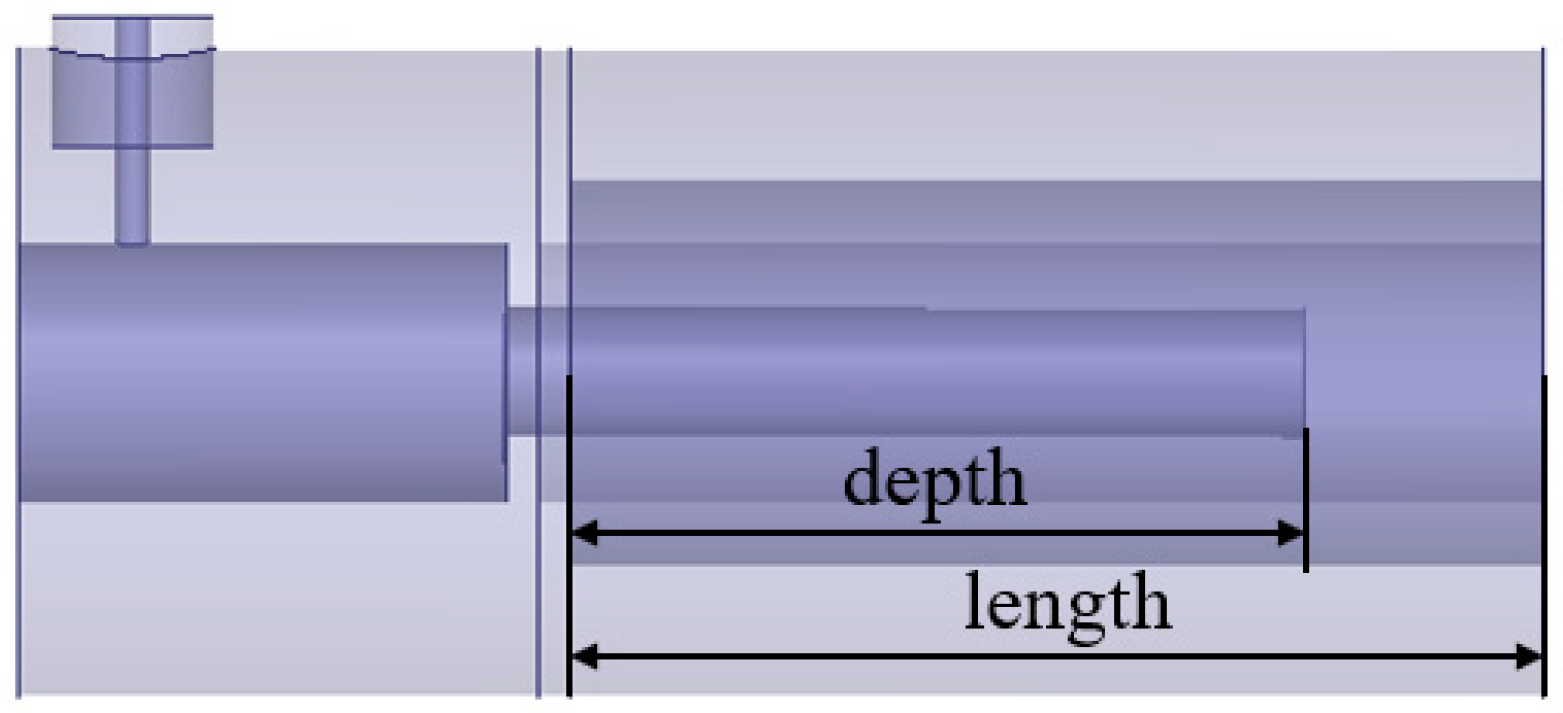

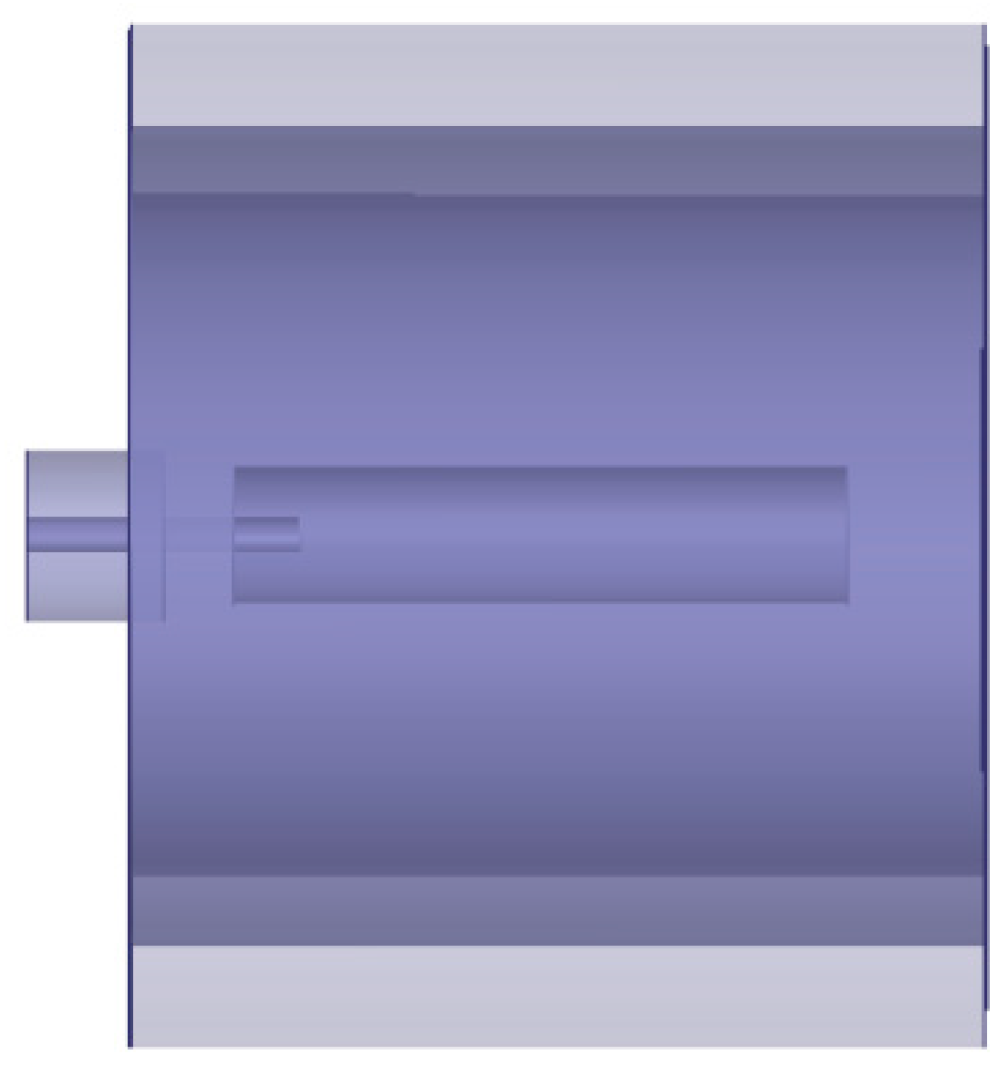


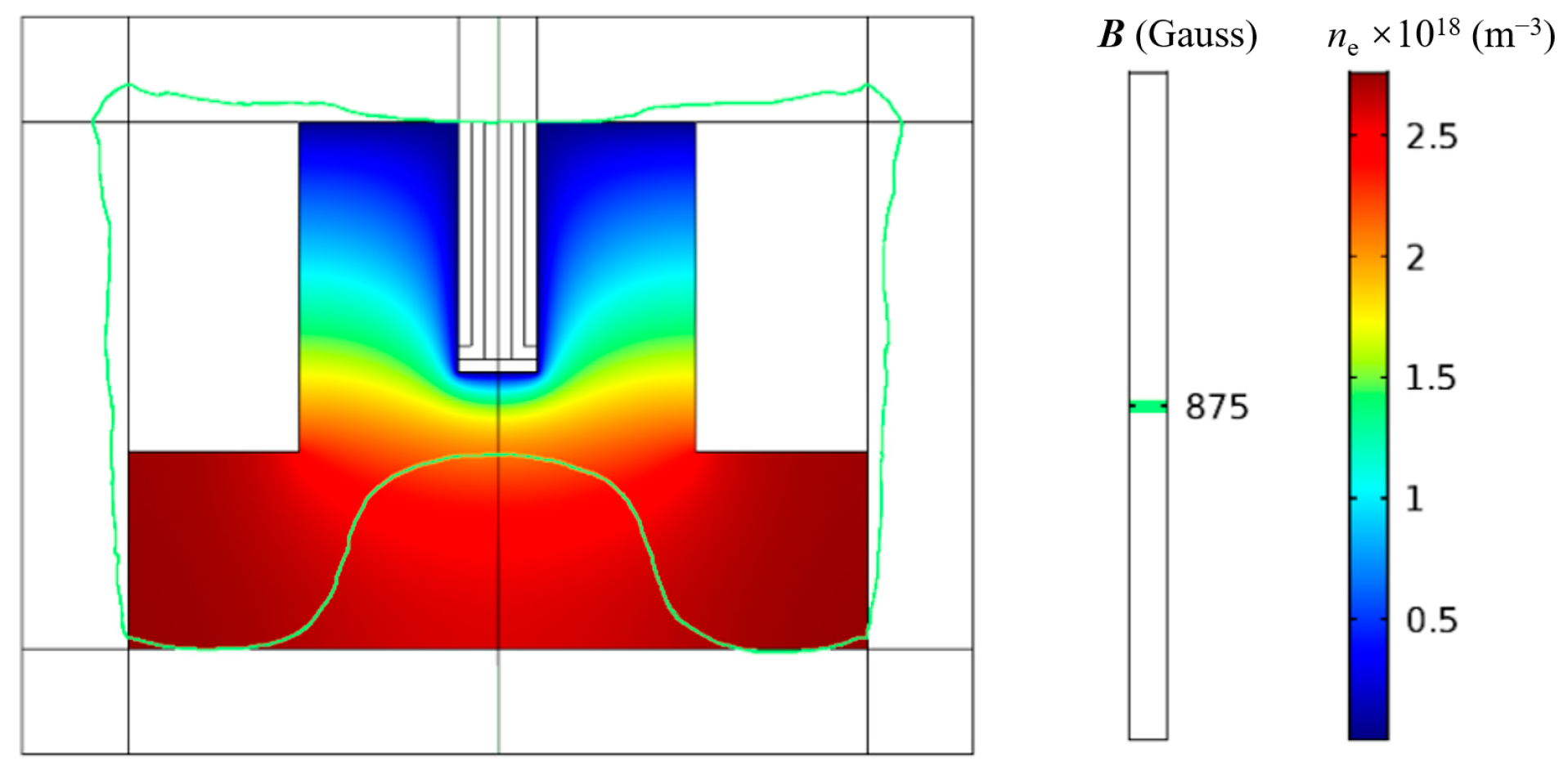
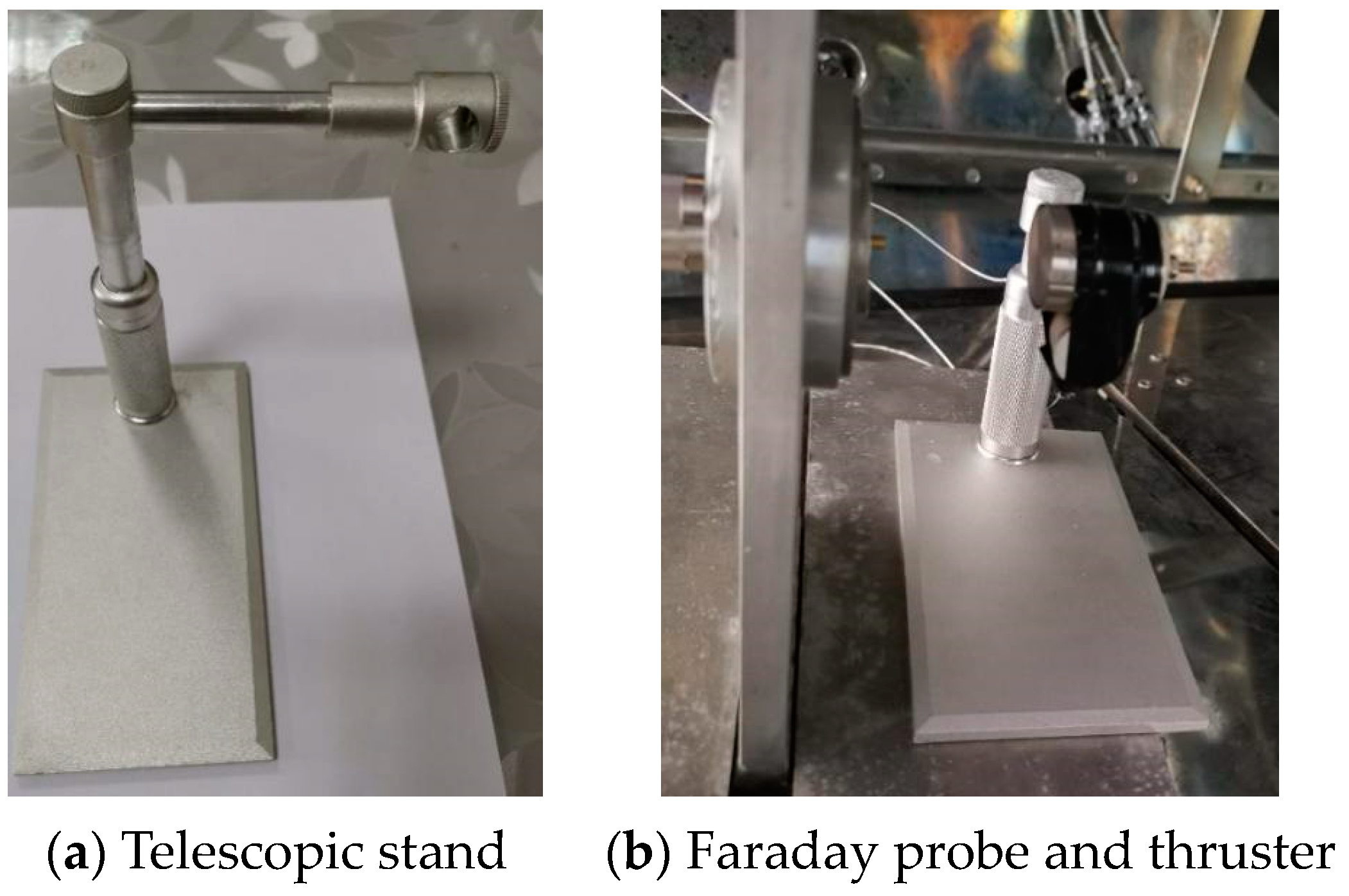


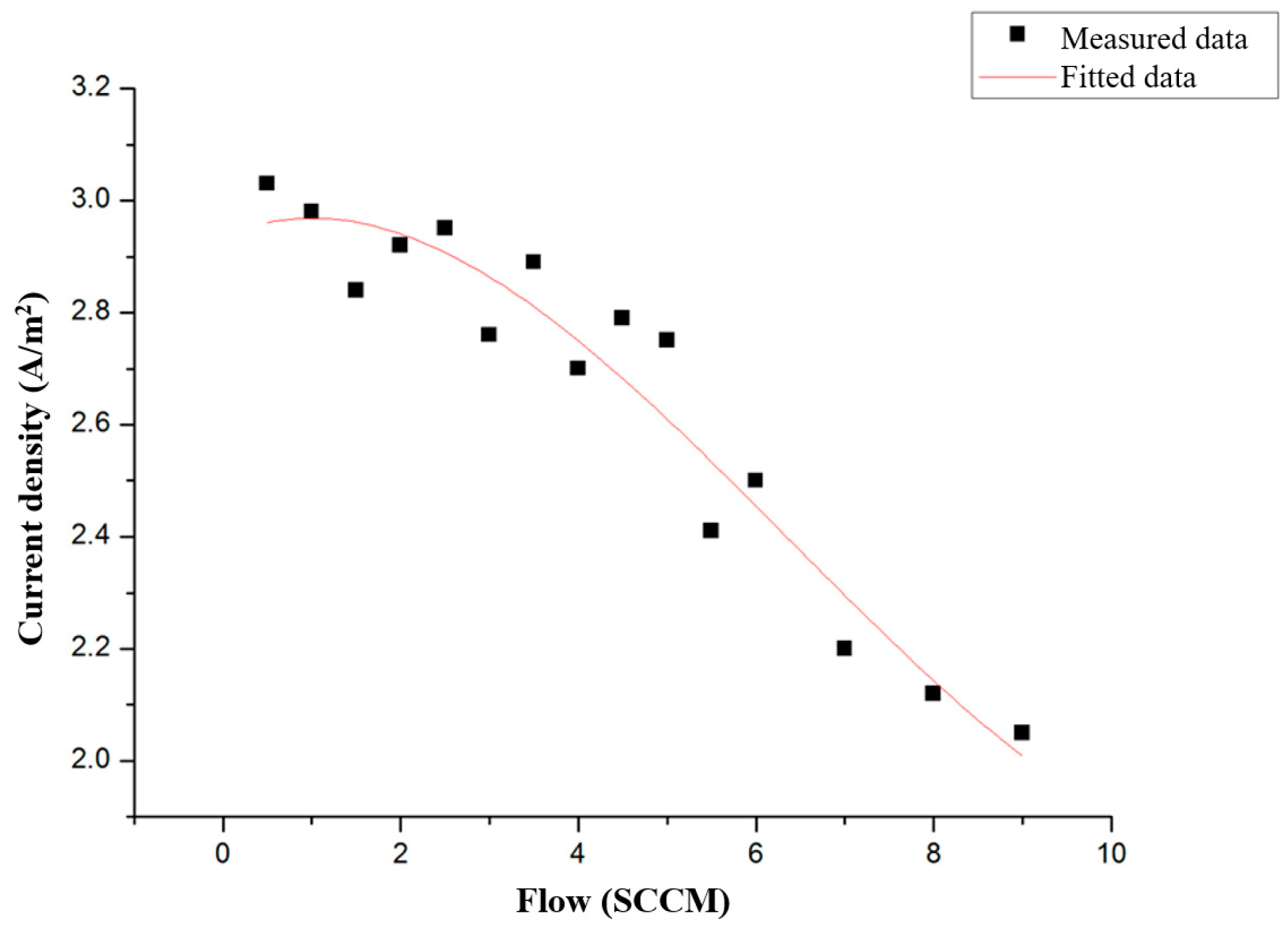
| Reaction | Formula | Type | Δε (eV) |
|---|---|---|---|
| 1 | e + Ar => e + Ar | Elastic | 0 |
| 2 | e + Ar => e + Ars | Excitation | 11.5 |
| 3 | e + Ars => e + Ar | Superelastic | −11.5 |
| 4 | e + Ar => 2e + Ar+ | Ionization | 15.8 |
| 5 | e + Ars => 2e + Ar+ | Ionization | 4.24 |
| 6 | Ars + Ars => e + Ar + Ar+ | Penning ionization | - |
| 7 | Ars + Ar => Ar + Ar | Metastable quenching | - |
| Microwave Power (W) | Ion Current (mA) | Ion Current Density (A/m2) |
|---|---|---|
| 5 | 0.6232 | 1.50 |
| 8 | 0.6870 | 1.65 |
| 10 | 0.7058 | 1.70 |
| 12 | 0.9348 | 2.25 |
| 15 | 1.0320 | 2.48 |
| 18 | 1.1530 | 2.78 |
| 20 | 1.2600 | 3.03 |
Disclaimer/Publisher’s Note: The statements, opinions and data contained in all publications are solely those of the individual author(s) and contributor(s) and not of MDPI and/or the editor(s). MDPI and/or the editor(s) disclaim responsibility for any injury to people or property resulting from any ideas, methods, instructions or products referred to in the content. |
© 2023 by the authors. Licensee MDPI, Basel, Switzerland. This article is an open access article distributed under the terms and conditions of the Creative Commons Attribution (CC BY) license (https://creativecommons.org/licenses/by/4.0/).
Share and Cite
Han, Y.; Xia, G.; Sun, B.; Zhang, J.; Chen, L.; Lu, C. A Novel Transversal-Feed Electron Cyclotron Resonance Plasma Thruster: Design and Plasma Characteristics Analysis. Aerospace 2023, 10, 865. https://doi.org/10.3390/aerospace10100865
Han Y, Xia G, Sun B, Zhang J, Chen L, Lu C. A Novel Transversal-Feed Electron Cyclotron Resonance Plasma Thruster: Design and Plasma Characteristics Analysis. Aerospace. 2023; 10(10):865. https://doi.org/10.3390/aerospace10100865
Chicago/Turabian StyleHan, Yajie, Guangqing Xia, Bin Sun, Junjun Zhang, Liuwei Chen, and Chang Lu. 2023. "A Novel Transversal-Feed Electron Cyclotron Resonance Plasma Thruster: Design and Plasma Characteristics Analysis" Aerospace 10, no. 10: 865. https://doi.org/10.3390/aerospace10100865
APA StyleHan, Y., Xia, G., Sun, B., Zhang, J., Chen, L., & Lu, C. (2023). A Novel Transversal-Feed Electron Cyclotron Resonance Plasma Thruster: Design and Plasma Characteristics Analysis. Aerospace, 10(10), 865. https://doi.org/10.3390/aerospace10100865




